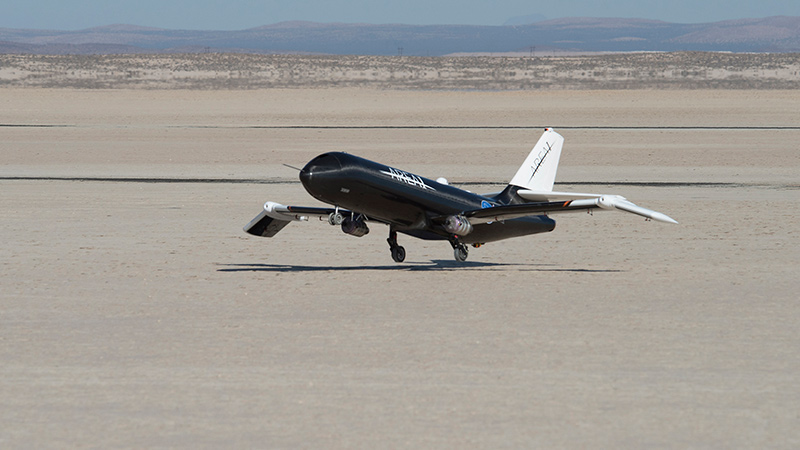Stay Up to Date
Submit your email address to receive the latest industry and Aerospace America news.
NASA’s Aeronautics Research Mission Directorate wants engineers and scientists to design aircraft and the materials for them in a coordinated fashion, and it is putting the finishing touches on a report it expects to release in February to define how that could be done.
The report, called “Vision 2040: A Roadmap for Integrated Modeling of Materials and Systems,” describes a future in which experts working at every stage in the development of an aircraft and its materials collaborate with each other, from the very beginning of the supply chain to manufacturing the plane to recycling it. As portrayed in a draft executive summary and by two of its contributors — Steven Arnold, manager of the Vision 2040 project, and Dale Hopkins, acting project manager of NASA’s transformational tools and technologies project — the report explains how each development stage would fit seamlessly with the other stages.
In the current environment, experts tend to organize themselves in silos, speak their own technical languages, and work independently as they pick up a project from the previous stage and then pass it off to the next stage. But in the future envisioned by the report, experts would share their knowledge and tools with engineers and nonengineers of all skill levels, even if those experts were not directly involved in the work at hand.
The report also paints a future where engineers and scientists will determine a material’s properties from computer models, not empirical data, and regulators will certify aircraft, and their systems and materials, based mainly on computer simulations.
To reach that vision of the future, the NASA report recommends how to overcome technical and cultural hurdles organized into nine categories. In all, the study identifies 118 gaps, including underdeveloped technologies, poor data management practices and workforce skill deficiencies.
Changing attitudes will be tougher than the technical hurdles, says Arnold, who is the senior research engineer leading materials and structures modeling, simulation and validation research at NASA’s Glenn Research Center in Cleveland.
“Technologically, a lot of the things we’re talking about building can all be done, technically. It’s cultures within organizations that are holding things back,” Arnold says. “You can have a great strategy; you can have this great road map. But if your culture won’t accept it, if it won’t deal with it, you’re dead.”
The carrot for engineers and scientists and their organizations to buy into the vision is the promise of a more streamlined, less expensive, faster, more practical aircraft design and build process. “The whole point of having the tools that are going to be involved in the 2040 vision is so I can go off and conceive of something, then I can design it and I can build it, and build it cheaper,” Arnold says. “You don’t just design some new fancy thing that you could never build.”
The report was drafted by NASA and its contractor on the project, Pratt & Whitney, and subcontractors Nexight Group, BlueQuartz Software and ESI Group, based on a two-thirds consensus of nearly 200 volunteer experts in the aerospace and materials science communities in private industry, government and academia. Those experts, organized into panels for each of the nine categories of hurdles and recommendations, winnowed ideas gathered from another 250 participants in surveys and workshops over the last two years.
Editor’s note: In the NASA photo at top, the PTERA, short for Prototype Technology-Evaluation Research Aircraft, tests an alloy as part of a project to develop aircraft wings made of a lightweight material that could bend in flight.
“Technologically, a lot of the things we’re talking about building can all be done, technically. It’s cultures within organizations that are holding things back. You can have a great strategy; you can have this great road map. But if your culture won’t accept it, if it won’t deal with it, you’re dead.”
Steven Arnold, manager of the Vision 2040 project and the senior research engineer leading materials and structures modeling, simulation and validation research at NASA’s Glenn Research Center in Cleveland
About Keith Button
Keith has written for C4ISR Journal and Hedge Fund Alert, where he broke news of the 2007 Bear Stearns hedge fund blowup that kicked off the global credit crisis. He is based in New York.
Related Posts
Stay Up to Date
Submit your email address to receive the latest industry and Aerospace America news.




